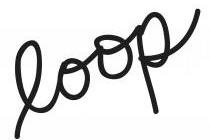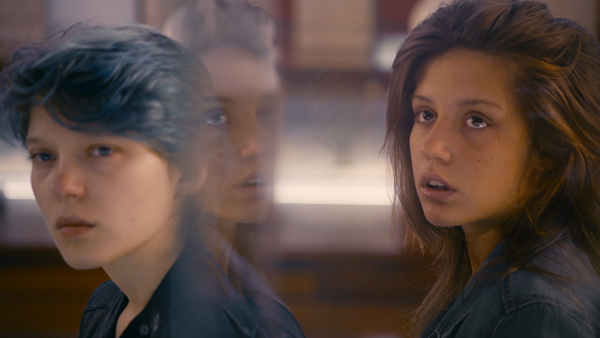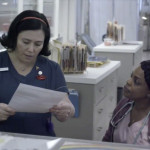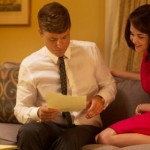Going into Abdellatif Kechiche’s latest soirée Blue is the Warmest Color I already heard how it was kind of a male-gazed fantasy that had a really unfulfilling ending despite it being adapted from the celebrated graphic novel from Julie Maroh, so I won’t deny that. But throughout the entire movie that is, above all things, pretty horny when it comes down to it, I didn’t necessarily find myself getting mad at the viewpoint of it all, but rather the fact that our main character Adèle never really came to grips with herself as lesbian fully (or as a bisexual, whatever it might be); the whole film was basically avoiding it.
Oh, that, and it’s 179 minutes long. By the last half hour or so you’ll seriously sigh as to how there could actually be more to go over, but perhaps it’s all a really long metaphor for relationships in general: that after a certain amount of bullsh*t we are too tired and worn out to actually continue trying with so-called love.
Whatever the case, Blue is the Warmest Color starts in a town in France with a very sexually confused high-school junior Adèle (Adèle Exarchopoulos) who by chance crosses paths one day with a hot older college art student Emma (Léa Seydoux) (the whole thing felt very Closer-esque). A brief glance is exchanged, then in due time they meet up again one night when the quietly curious Adele “drifts off” to a gay bar by herself. When Emma leaves abruptly without a clue as to if they will ever see each other again, she shows up the next day at Adèle’s high school, triggering some harsh criticism from her immature classmates who are seemingly more concerned with her sex life than she is.
But as years pass (you must play close attention to the time lapse or you’ll get lost) and the two ease into each other, the sex—as most relationship veterans are aware—eventually fades. And after the sex disappears, well, you have to have something or else one person can start to feel alone and then there’s cheating and blah, blah, blah—meaning: no, relationships can’t survive solely on sexual desires (or can they?). That was the main problem of Emma and Adèle, was that there was no mutual foundation for their love, really, besides Adèle’s initial fantasy of Emma at the bar and sex (lots and lots of sex).
The only problems I really had with the movie was JESUS CHRIST STOP FOCUSING ON ADELE’S LIPS, and not to say the sex scenes weren’t hot; they were, but it was like there was this porno-centric visual of same-sex love that I’m sorry, just doesn’t exist in real life. Plus, Adèle never fully came out, which was problematic for me only because I want these types of stories to end with a positive reinforcement of not living in fear of sexuality. But if you’re in it for what it is, a movie about two chicks fallin’ in love, and are not a big on the nit-picking of everything (and getting through the entire 179 minutes), then Blue is the Warmest Color is a gorgeous movie that was a pretty good time.
(photo via Dork Shelf)




